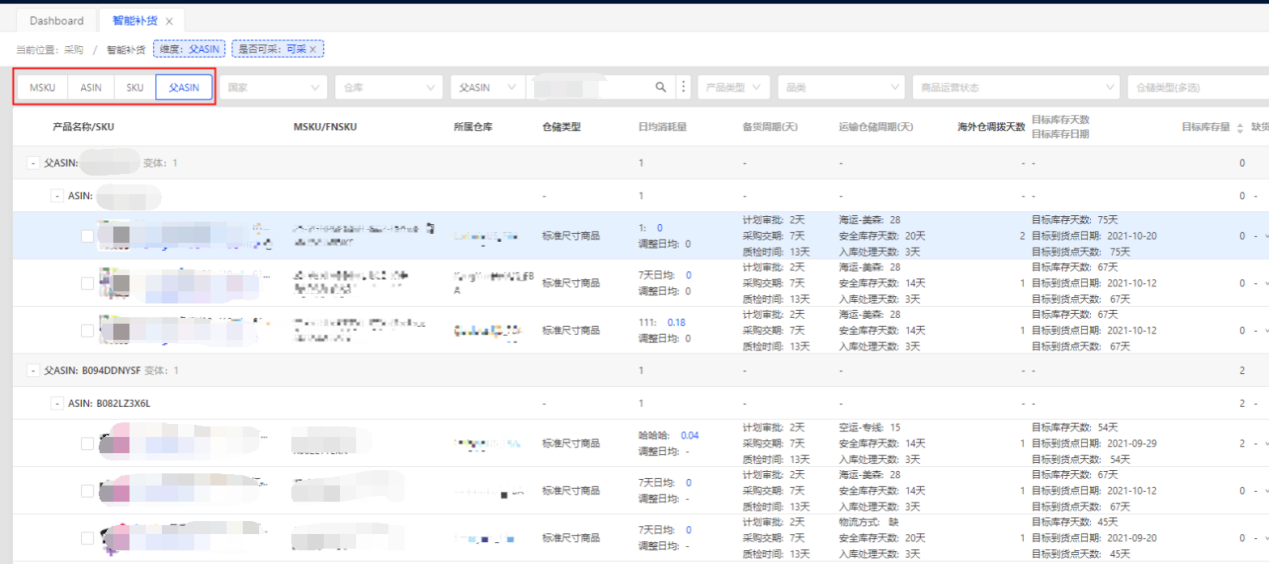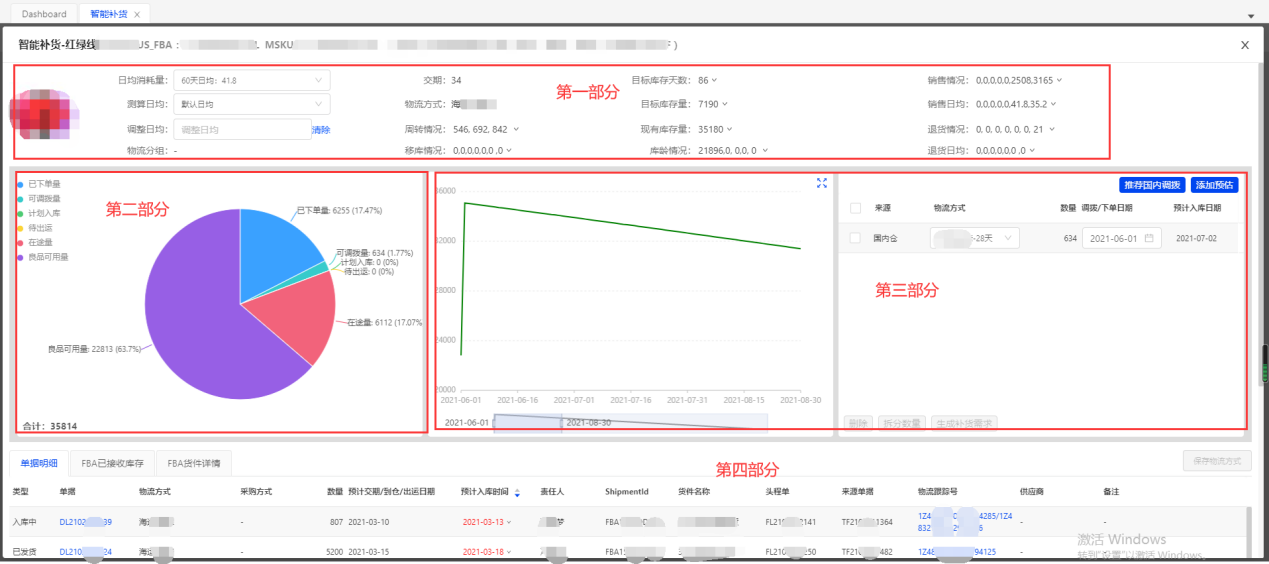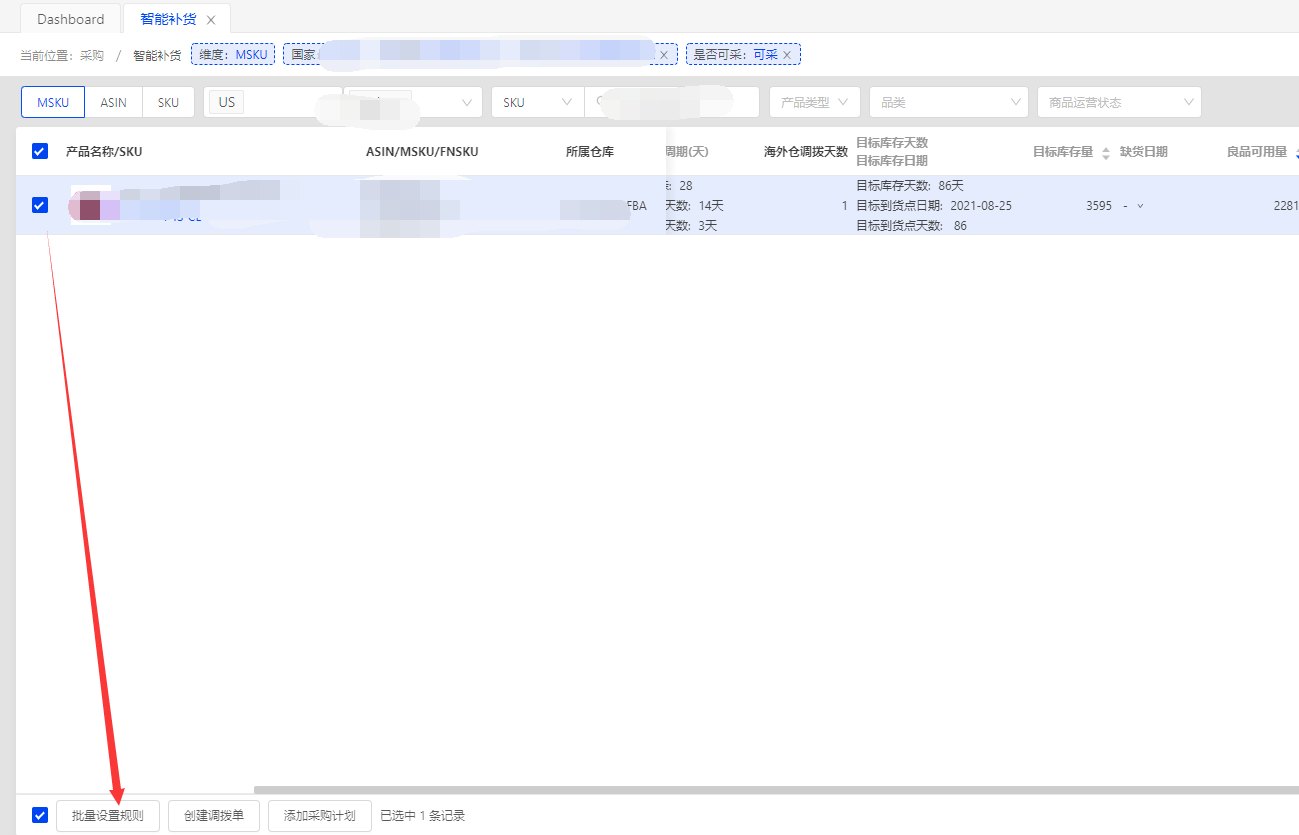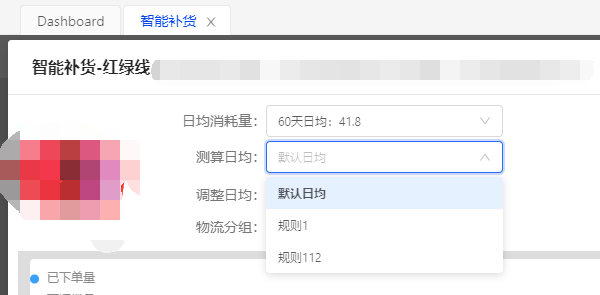Add ERP2 to bid farewell to the problem of out-of-stock and unsalable sales.
Amazon sellers have long been plagued by two problems: one is that they can’t replenish their goods in time, and the other is the backlog of inventory. Compared with no order, shortage is more troublesome, which will directly affect the ranking of sellers’ stores, thus affecting sales.
Therefore, inventory management is a very important part in the operation of Amazon sellers, which affects the normal operation of the entire supply chain system.
Inventory management is the key to promotion and sales.
What should the seller do if he doesn’t want to be unsalable or out of stock? First of all, we should understand three formulas:
Replenishment lead time= (internal processing days+purchase days+transit warehouse operation days+logistics processing days+destination warehouse operation days+safety stock days)
Maximum inventory value= (Replenishment lead time+lead time) * Average daily sales volume
Replenishment quantity= Maximum Inventory-In-transit Inventory
Sellers can first estimate the inventory situation according to the above three formulas, and then make adjustments according to the situation of their own stores when actually accounting.
The stock just sold out and the materials arrived at the same time.
Inventory management not only affects store sales, but also ultimately affects sellers’ recovery of funds. If the seller’s shop is out of stock, the ranking of the explosive products that are hard to build may drop sharply. When this happens, competitors may occupy the position, and sellers will have to pay more time and money to return to the previous ranking position. Therefore, the seller should check the FBA inventory in real time and arrange the replenishment reasonably, so as to better manage the FBA inventory and let the funds flow back quickly.
Inventory management can’t be solved efficiently and systematically by manpower alone, so there is a "magic weapon" for inventory management with the help of digital and refined ERP management software.
The R&D team of Jijia ERP puts itself in the position, excavates the inventory management needs of cross-border sellers, introduces intelligent replenishment, red and green lines and other functions, breaks the pain points of sellers’ inventory operation one by one, grasps the order quantity and inventory in real time, and operates efficiently.
Intelligent replenishment of various reference dataUpdate every hour., so that operators can control the inventory dynamics at any time and make sales strategies quickly.

① MSKU dimension: the most common dimension, which is suitable for operation colleagues to check the replenishment of MSKU under their responsibility.
② ASIN dimension: If a single ASIN corresponds to multiple MSKU, and the operation colleagues want to see the replenishment of the whole ASIN, they can view the ASIN dimension; In addition, in general, there will be a main MSKU under an ASIN, but the historical sales of the main MSKU may be affected because of out-of-stock. If we only look at the replenishment situation of one MSKU, it will cause human error in judgment. As a whole, all MSKU data under this ASIN will know the data of other MSKUs, so that the judgment of the main MSKU will be more accurate.
③ SKU dimension: If a SKU maps multiple MSKUs, the operation colleagues can view the replenishment status of the whole SKU and all the corresponding MSKUs in this dimension.
④ Parent ASIN dimension: the replenishment status of the whole parent ASIN can be viewed, and the list is displayed by parent ASIN group, and the parent ASIN group is displayed by ASIN; If there is no parent ASIN, it is displayed directly according to the ASIN group; Limited display of groups with parent ASIN.

At the same time, intelligent replenishment supports single/multiple countries to view data, and also supports selecting specific FBA warehouses to view the replenishment status of corresponding goods.
Intelligent replenishment can help sellers to stock goods reasonably.Let the sales continue, and the goods can be sold at any time; The inventory is not overstocked and the inventory quantity reaches a reasonable state.Let all the inventory in the seller’s warehouse just be sold out, and the next batch of purchased materials will arrive at the same time.
Efficient prediction of out-of-stock time by red and green lines
The red-green line is based on the on-hand quantity, daily average consumption, goods in transit and the expected warehousing time of the FBA warehouse to predict the future consumption and replenishment trend, and intuitively reflect the shortage interval with charts. In this way, the seller can micro-control at any time, modify the daily average, make emergency replenishment, etc., among which the ideal state isAll green lines.
The red-green line is mainly divided into four parts, and the seller can check it according to the actual situation and arrange replenishment.

The first part: The seller can clearly see the data such as delivery date, target inventory days, target inventory, daily average sales, on-hand inventory, etc. Among them, the seller can set the rules for calculating the daily average (in the intelligent replenishment interface), which also takes into account the different sales of different sellers in the off-season and peak season, so as to adjust the daily average.


The second part: The data pie chart can obtain the data in the product inventory in real time. Through the graphic intuitive display, the seller can see the details by moving the mouse gently. In busy situations, it only takes 3 seconds to grasp the inventory situation and make timely decisions.

The third part: The seller can check the late replenishment effect according to the products with the least inventory, add an estimate on the right, and after selection, you can see the predicted out-of-stock time after the new order is placed. The system will calculate the most suitable logistics mode according to the out-of-stock date, saving the budget.


Part IV: The seller can view all the unprocessed supply chain documents corresponding to this destination warehouse, that is, the documents that have not been put into storage, including purchase plans, purchase orders, delivery orders, delivery orders and transfer orders. It also supports viewing FBA received inventory data and FBA shipment information.

After mastering the inventory situation in time, replenish the goods intelligently and quickly, then the problem of FBA inventory management will be solved, and multi-site and multi-store will follow up the warehousing information in one stop, so that sellers can grasp the warehousing situation of products more efficiently, accurately and intuitively, so as to arrange the operation tasks accordingly.
Poor inventory management also directly affects your IPI score. If the seller already has an IPI score, and the IPI score exceeds 400 points at six weeks before the end of the current quarter and the last day of the quarter, it will be obtained in the next quarter.Infinite storage capacity.
If it is lower than 400 points at both time points, the warehousing in the next quarter will be limited, and the excess will be charged extra, but the seller need not worry, and the IPI score will be naturally high by using the total inventory of accumulated ERP!
Finally, don’t sell redundant products at a one-time discount, which will not only be popular, but will also be forced to join the ranks of Add-on Item.
We should make a concrete analysis according to the actual situation, such as whether it is possible and necessary to continue to sell redundant products, that is, whether buyers still have demand? Is it profitable to sell products? So as to obtain different treatment schemes.
Disclaimer: This article is reprinted by our website, aiming to provide readers with more news information. The contents involved do not constitute investment and consumption suggestions, and are for readers’ reference only.